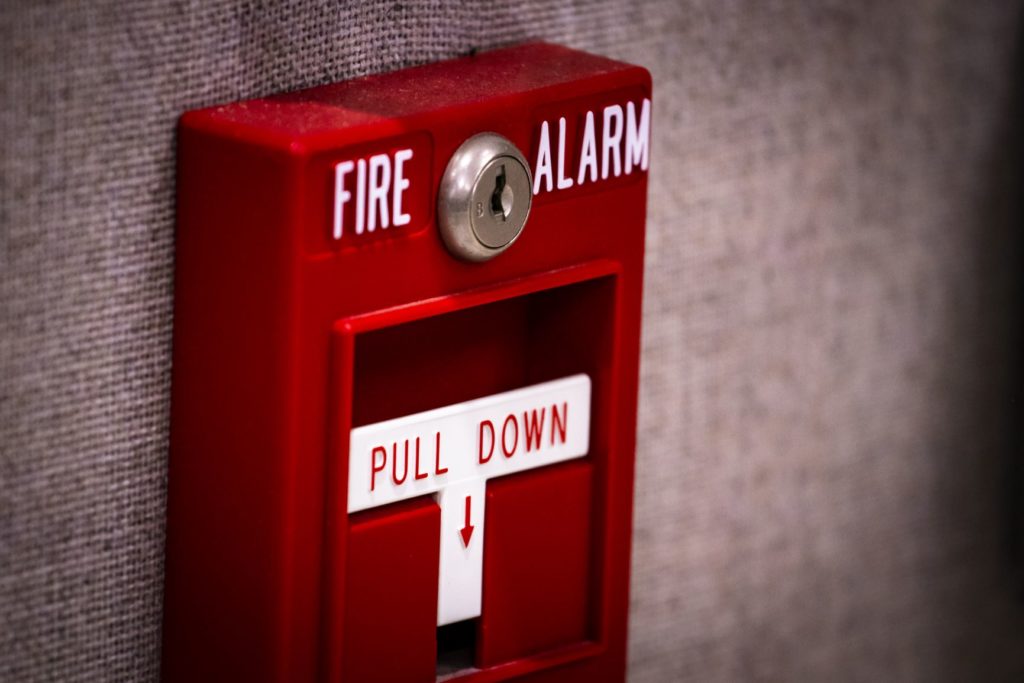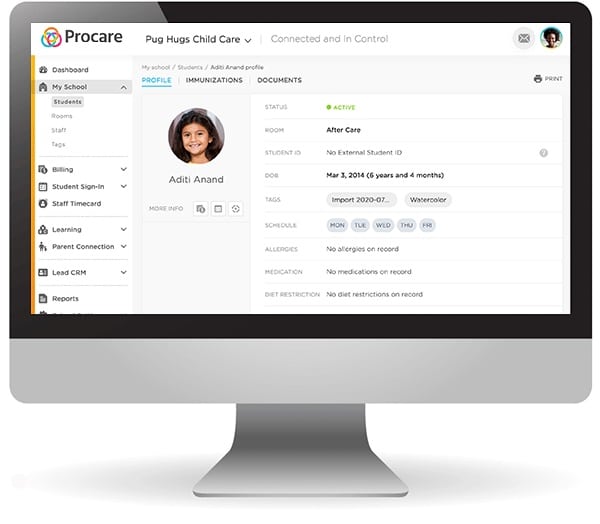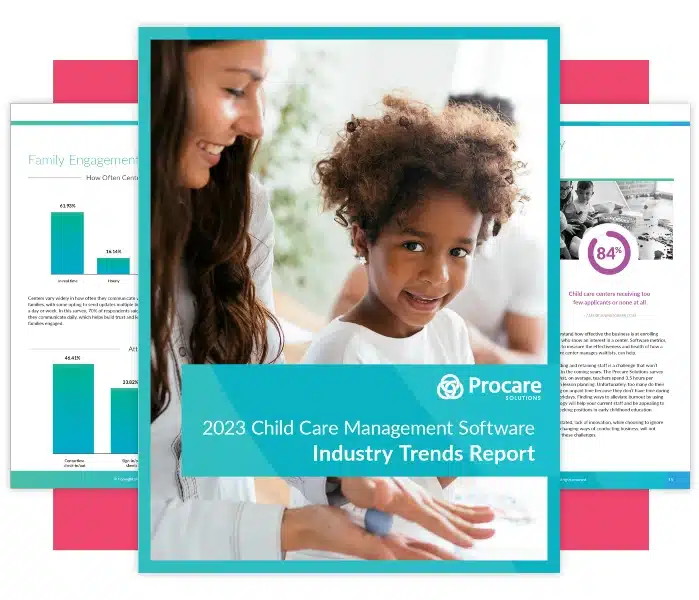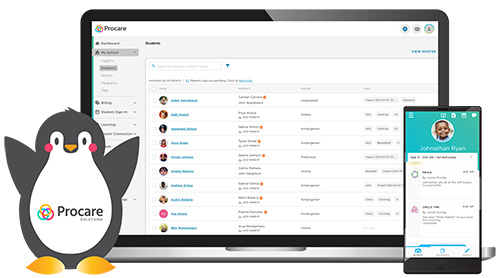
From the time your first kids arrive in the morning until the last one leaves at the end of the day, your child care center is responsible for ensuring the health and safety of every child, employee and volunteer on site.
Living up to that responsibility means identifying and removing hazards that could pose a safety risk to children or staff at your center. It also means understanding that things won’t always go according to plan, and being prepared for unexpected circumstances that could impact the health and safety of children or staff members at your center.
To help you get started, we’ve put together this helpful guide to risk management for child care centers. We’ll explain what risk management is and why it’s important, identify some of the biggest sources of risk for child care centers, and outline a six-step risk management process that can help protect your business, staff and children from harm.
Let’s dive in!
What is Risk Management?
Risks are unexpected or unplanned events that can result in danger, harm or loss. Risk management (also called business continuity) is an intentional planning process that focuses on:
- Identifying potential sources of risk.
- Understanding the danger, harm or loss that could result from those risks.
- Finding ways to transfer, mitigate or eliminate risks from the environment.
For child care centers, some of the biggest risks involve threats to the safety of children, providers, volunteers and other staff members – but it doesn’t end there. There are also strategic and financial risks that can impact whether your child care center can meet its business objectives and obligations, and stay open for the long term.
To make your child care business a success, you’ll need a risk management plan that covers all of the above. In the next section, we’ll look at some of the biggest sources of risk that you should think about as you begin risk management planning for your child care center.
What are the Risks at Child Care Centers?

The first step to shielding your child care center from risk is identifying the major sources of risk that could have an impact on your business.
This is where it pays to use your imagination – the more types of risk you envision, the better you’ll be prepared to mitigate or respond to them when they arise. Let’s take a look at some of the major risk categories for child care centers and why they’re important.
Strategic Risk
Strategic risks are all of the risks related to the strategic goals you set and the business decisions you make for your child care center.
Strategic risks can appear any time you make a big decision for your child care business, but they’re especially important to manage when you’re first getting started and making big decisions like:
- Where will I choose to open my child care center?
- What type of program will I operate?
- Which age groups will I serve?
- How will I market my child care center in the community?
Opening your center in the wrong location could make it too difficult for you to attract new customers and ultimately sink your business. Choosing to serve a specific age group or offer specialized programming is also a risk – it might make your program seem more desirable for parents, or it could have the opposite effect if it seems too narrow a focus.
Financial Risk
Financial risks are all of the risks that can result in financial losses for your child care center. They include things like:
- Property Liability Exposure – What if a child or parent is injured on the premises of your center and files a lawsuit against your business?
- Fraud Risk – What if an employee tries to steal money or goods from your center?
- Cash Flow Risk – What if your center isn’t generating enough cash flow to pay its bills or employees?
Operational Risks
Operational risks are all of the risks that could result in your child care center being unable to operate. They include things like:
- Business Disruption Risk – What if there’s a local power outage or a broken water main that impacts your daily operations?
- Asset Damage Risk – What if your child care center is vandalized or damaged by a natural disaster?
Health & Safety Risks
Health and safety risks are all of the risks that could result in illness, danger or harm to children or staff members at your child care center. They include things like:
- Allergy Risks – What if a child has an allergic reaction at your center?
- Security Risks – What if an unauthorized person tries to enter your center?
Compliance Risks
Compliance risks are all of the risks that could affect your child care center’s compliance with local, state and federal regulatory requirements.
- Recordkeeping Risks – What happens if staff members don’t keep records in compliance with state laws?
- Hiring Risk – What happens if staff members are hired without the proper educational requirements, background checks or other compliance requirements?
As you can see, risks are everywhere in the business of child care. They can impact a center’s ability to achieve its business goals, meet its financial obligations, stay open for business, ensure the safety and security of kids and staff members, and comply with the law.
Failure to mitigate these risks can also result in damage to a center’s reputation, affecting its ability to attract new customers and turn a profit. That’s why it’s so important to identify and plan for risk with an effective risk management strategy.
Next, we’ll outline a six-step risk management plan that you can use to start addressing risk at your center.
Risk Management for Child Care Centers in Six Steps

Document Sources of Risk
The first step in your risk management plan is to document all potential sources of risk that apply to your child care center. Use your imagination and start making a list of all the unexpected events that could happen which would pose a risk to your business.
Make your list as complete as possible, but remember to add more potential risks over time as they come to mind.
Evaluate the Probability and Impact of Each Risk
For each item in your list, you’ll want to think about the probability or likelihood of the risk and the impact it would have on your business.
You may want to record the probability as a percentage and rate the potential impact of the event on a 10-point scale. Doing this will help you understand which risks pose the greatest danger to your child care business. As a result, you’ll be able to create a risk mitigation plan that addresses the most probable and impactful sources of risk.
Determine Which Risks May Be Avoided
Now that you’ve identified major sources of risk and determined which risks pose the greatest threat, it’s time to start managing those risks!
The first step is to identify any risks that you can completely avoid by implementing training, processes or technology within your business. For every such risk, you’ll want to document the exact steps that you will take to avoid the risk.
Transfer Risk Where Possible
Once you’ve dealt with risks that are avoidable, the next step is to address sources of risk that can be transferred to someone else. There are two general ways you can think about doing this:
- Purchasing Insurance – Purchasing insurance that shields you from liability for certain risks.
- Liability Waivers – Having parents sign a liability waiver that shields you and your business from liability for certain risks.
Establish Mitigation/Prevention Plans for Unavoidable Risks
If a risk can’t be avoided or transferred to another party, you may want to establish a risk mitigation plan. The goal of risk mitigation is to reduce both the likelihood and the impact of a risk to your child care business. Your risk mitigation plan should describe the steps you will take to reduce the likelihood and/or the impact of a risk to your center.
Establish Risk Response Protocols
As a final step, your center should establish risk response protocols for any sources of risk that can’t be avoided or transferred as part of your risk management plan. The protocol should detail how your center will respond to certain types of risk to minimize their impact on your business, staff members, and the children in your care.
Risk Management for Child Care Centers Example
Before we wrap up, we wanted to leave you with a quick example of what your risk management plan might look like.
This short table includes three examples of potential risks, evaluations of their likelihood and impact, risk management strategy (avoid, transfer or mitigate), and specific action steps for managing each type of risk.
| Risk | Description | Annual Probability | Impact | Risk Management Strategy | Action Steps |
| Premises Liability Exposure | The center is liable and could be sued for any accidental injury that occurs to a parent or child on the premises. | 5% | 10/10 | Transfer | Purchasing business liability insurance will transfer this liability to the insurance company and reduce the impact of this risk to a 1/10. |
| Staff Hiring Risk | The center’s compliance status and reputation could be damaged if a staff member is hired without the appropriate education, experience, qualifications, certifications and background checks. | 25% | 7/10 | Avoidance | This risk can be avoided by consistently following a hiring process that includes background checks, reference checks, and verification of credentials/education. Performing these actions can reduce the impact of this risk to a 1/10. |
| Fraud Risk | The center could lose money if an employee steals from the business. | 20% | 3/10 | Mitigation | This risk can be mitigated by training employees on the consequences of theft and performing regular financial and inventory audits to check for missing goods or money. This would reduce risk to a 1/10. |
Manage Risks at Your Child Care Center with Procare Solutions

Procare’s easy-to-use software and technologies help child care centers just like yours successfully manage risk. Our large expert community and years of experience give us the wisdom to recognize the biggest risks you face and how to mitigate them effectively.
Our child care management app digitizes your child care records, making it simpler than ever to stay compliant with state recordkeeping laws for your center. Our child care billing solution makes it quick and convenient for parents to pay, helping your center maintain positive cash flow so you can stay in operation.
And if you’re concerned about child safety and security risks at your center, Procare has you covered with technologies like contactless check-in, keyless entry and biometric identification that are proven to keep kids safe.
Ready to alleviate your worries and start managing risks with Procare Solutions?





